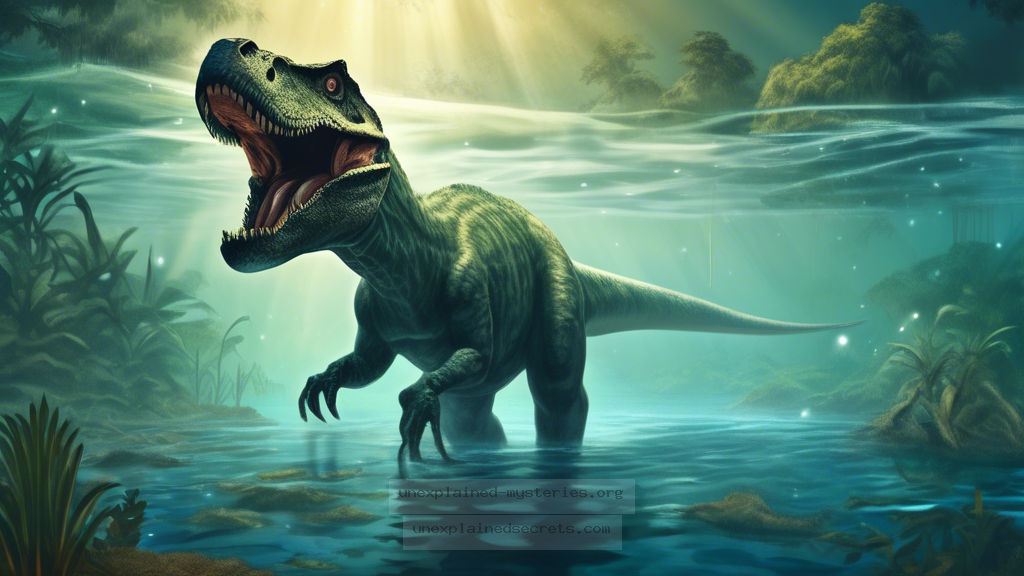What Happened to the Mokele-Mbembe: The Legend of Africa’s Elusive Dinosaur?
What Happened to the Mokele-Mbembe: The Legend of Africa’s Elusive Dinosaur?
The world is filled with mysterious creatures that have sparked the imagination of adventurers, scientists, and cryptozoologists alike. Among these enigmatic beings is the Mokele-Mbembe, a creature said to inhabit the rivers of the Congo Basin in Africa. Its existence has been a topic of fascination and debate for decades. Could this legend be rooted in truth, or is it merely folklore? Understanding the Mokele-Mbembe is essential, not just for cryptozoology enthusiasts but also for those curious about the intersection of myth and science.
Historical Context of the Mokele-Mbembe
The Mokele-Mbembe, which translates to “one who stops the flow of rivers” in Lingala, has been part of local mythology for centuries. Descriptions of the creature often resemble those of a sauropod dinosaur, characterized by a long neck and tail, with a bulky body. Local tribes, including the BaAka and the Nganga, have recounted tales of the Mokele-Mbembe, describing it as a massive creature that dwells in the waters of rivers like the Congo, Likouala, and Oubangui.
The first Western accounts of the Mokele-Mbembe emerged in the late 19th century. Notably, in 1776, German explorer and naturalist Friedrich Wilhelm Heinrich Alexander von Humboldt documented stories of large creatures in the region. However, it wasn’t until the 20th century that interest in the Mokele-Mbembe intensified, particularly with expeditions led by researchers and cryptozoologists like Ivan T. Sanderson and more recently, Dr. Philippe Taquet. These efforts sought to uncover whether the Mokele-Mbembe was a remnant of a prehistoric age or simply a myth.
Core Concepts: Theories and Descriptions
Descriptions of the Mokele-Mbembe vary widely but often share common elements. Witnesses describe it as a creature measuring between 30 to 40 feet long, with a long neck reminiscent of a brontosaurus. Its skin is said to be dark and smooth, similar to that of an elephant. Some accounts even describe it emerging from the water, causing waves that resemble those generated by a large boat.
Several theories exist regarding the Mokele-Mbembe’s origins. Some scholars speculate that it could be a surviving species of dinosaur, akin to the sauropods that roamed the Earth millions of years ago. Others propose that the creature may be a large, unidentified species of crocodile or a misidentified hippopotamus. This ambiguity fuels ongoing fascination and debate within both scientific and cryptozoological communities.
Real-World Examples: Documented Sightings
Numerous attempts have been made to document sightings of the Mokele-Mbembe, yet definitive proof remains elusive. One notable incident occurred in 1981 when a team of researchers led by Dr. James Powell reported numerous eyewitness accounts from locals. Several villagers described seeing the creature swimming in the river, and some claimed to have seen its footprints along the riverbanks.
Another significant expedition took place in 2003, organized by the Discovery Channel. The team, including cryptozoologist Loren Coleman and filmmaker Paul Barron, ventured into the Congo Basin armed with modern technology. They aimed to capture evidence of the Mokele-Mbembe, including audio and video footage. Though they experienced strange occurrences and captured inexplicable sounds, they ultimately found no conclusive evidence of the creature’s existence.
Practical Implications: Evidence and Investigation
Investigating a creature like the Mokele-Mbembe poses unique challenges. The dense jungles of the Congo Basin are notoriously difficult to navigate, and the region is often politically unstable, complicating research efforts. Additionally, the lack of reliable documentation and the reliance on anecdotal evidence make it challenging to substantiate claims.
For researchers, employing a multidisciplinary approach is essential. Utilizing local knowledge, combining traditional ecological methods with modern technology like drones and sonar mapping, may yield better results. Engaging with indigenous communities not only provides insight into local lore but also helps foster trust and collaboration in research.
Alternative Perspectives: Skepticism and Criticism
Furthermore, the interpretations of eyewitness accounts can be influenced by cultural expectations and the allure of the unknown. Skeptics warn that people may misidentify known animals, attributing larger-than-life qualities to them due to excitement or fear. For instance, the hippopotamus, often seen as a terrifying creature in its own right, might be mistaken for a more mythical beast in the heat of the moment.
Common Misconceptions and Clarifications
One common misconception is that the Mokele-Mbembe is a direct descendant of dinosaurs, which conflates scientific concepts with folklore. While the notion of a living dinosaur is captivating, the evolutionary timeline suggests that any such creature would have diverged significantly from its dinosaur ancestors over millions of years.
Another misunderstanding pertains to the nature of eyewitness accounts. People often assume that a large number of sightings equate to the creature’s existence. However, it is essential to consider the reliability of witnesses and the context of their experiences. Anecdotal evidence can be compelling but does not constitute scientific proof.
Best Practices for Investigation
For those interested in investigating the mysteries surrounding the Mokele-Mbembe, several best practices can enhance the research process:
- Engage with local communities to gather stories and insights.
- Document all findings meticulously, using video and audio recordings when possible.
- Utilize technology such as drones and wildlife cameras to observe remote areas.
- Collaborate with ecologists and biologists to lend scientific expertise to the investigation.
- Remain skeptical and open-minded, prioritizing evidence over folklore.
These practices can help researchers approach the mystery of the Mokele-Mbembe with respect, thoroughness, and scientific rigor.
Future Developments: Ongoing Research and Speculations
The search for the Mokele-Mbembe continues to intrigue both scientists and enthusiasts. Ongoing research efforts focus on understanding the biodiversity of the Congo Basin, which remains one of the least explored regions on the planet. Advances in technology, such as environmental DNA (eDNA) sampling and improved mapping techniques, hold the potential to uncover new species, whether they relate to the Mokele-Mbembe or not.
Moreover, as conservation efforts increase in the region, the spotlight on the Congo’s ecosystems may lead to heightened interest and investment in research. The mystery of the Mokele-Mbembe could serve as a catalyst for broader studies that may ultimately reveal more about the rich biodiversity of this area.
Conclusion: The Enigma of Mokele-Mbembe Persists
The Mokele-Mbembe remains one of the most enduring mysteries in the field of cryptozoology. With a rich history rooted in local folklore and a continuous stream of reported sightings, the creature captivates the imagination of many. While skepticism is warranted, the possibility of undiscovered species lurking in remote areas of the world cannot be dismissed.
As research methodologies evolve and technology improves, the quest to unravel the truth behind the Mokele-Mbembe symbolizes the broader search for understanding in an ever-mysterious world. Whether it is a living remnant of a bygone era or a powerful cultural symbol, the Mokele-Mbembe will likely continue to inspire exploration and curiosity for generations to come. ✅
Other Articles
Recent Posts
- What Happened to Flight MH370? The Conspiracy Theories That Still Haunt Us
- What Secrets Lurk Within the Walls of the Infamous Trans-Allegheny Lunatic Asylum?
- What Evidence Supports the Existence of Bigfoot in the Pacific Northwest?
- What Happened to the Indus Valley Civilization? Unraveling the Mysteries of Ancient Urban Life
- Can Telepathy Be Scientifically Proven Through Laboratory Evidence?







